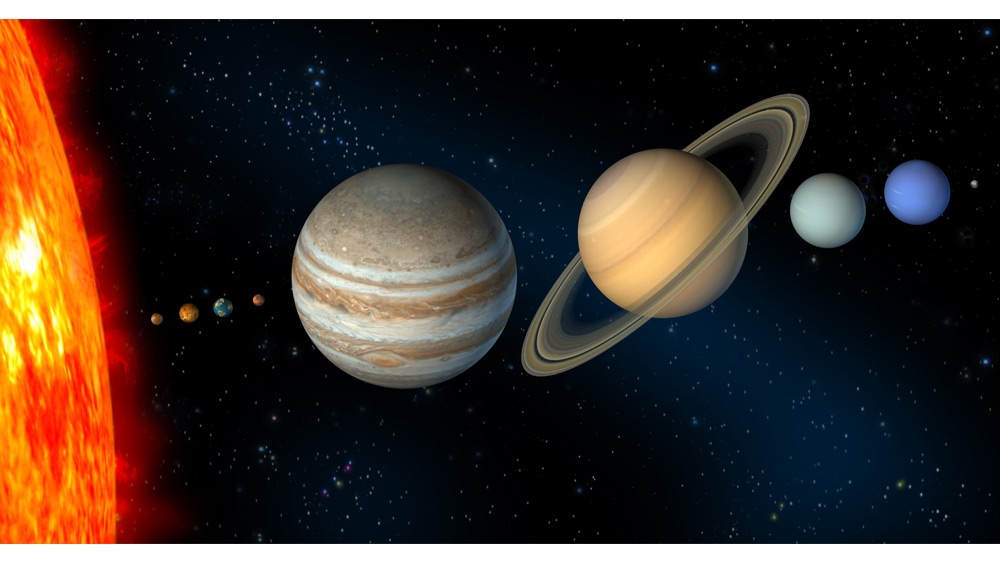Before discovering thousands of planets in other solar systems, scientists tended to assume that other solar systems would be very similar to our own. Yet this is turning out not to be the case. Indeed, NASA science writer Pat Brennan said about our solar system that “after a quarter century of discovery revealing thousands of exoplanets in our galaxy, things look very different. In a word, we are ‘weird’—at least among planetary systems found so far.”1
Creationists agree, adding that astronomers have yet to find any solar system like ours. For example, astronomers state our sun is incredibly mild compared to similar stars. It’s almost like the sun was designed so it wouldn’t overwhelm the earth with aberrant and massive solar flares.
A science writer for Forbes stated that “our Sun—a yellow dwarf, middle-aged, [and] relatively hot—is in the minority. Less than 10 percent of stars in the Milky Way fit that description.”2
In addition, it doesn’t look like our sun is normal, but it is “peculiar in its own right.”3 Astronomy author Bruce Dorminey asks, “...if the Sun is average, where are all its analog among the hundreds of billions of stars in our galaxy?”3
The moon is also unique. An Astronomy article explains,
For the terrestrial planets (Mercury, Venus, Earth and Mars), our Moon stands alone. Sure, Mars has two moons but Phobos and Deimos are glorified space potatoes, captured asteroids that zip around the planet. Our Moon is spherical and circles us at a relatively leisurely 27 days per orbit. It is also the only astronomical object other than the Sun that influences processes on Earth (think: tides…but not earthquakes or volcanic eruptions).4
An author writing in Space.com claimed that although our moon is unique in our solar system, it might be unique within the universe!5
The one-of-a-kind Earth/moon—or “binary” as some astronomers informally call it—system is unlike any kind of planet/moon arrangement seen by astronomers so far. It’s almost as if the moon was designed to be the right size and distance from the earth, not only to give us the tides that are so critical for the health of our planet but also to provide incredible total solar eclipses.
In fact, one of the reasons we on Earth can view a total solar eclipse is because of the unique design of our solar system. An early creation scientist was Sir Isaac Newton. Though he is famous for studying gravity and his three laws of motion, he wrote more on theology than he did on science. He once wrote, “This most beautiful system of the sun, planets, and comets, could only proceed from the counsel and dominion of an intelligent and powerful Being.”6
Centuries later, two secular astronomers echoed what Newton said in a university astronomy text, “On large scales, the solar system presents us with a sense of orderly motion.”7
Late March to early April 2024 is a favorable eclipse season. A favorable configuration is when the moon is full or new as it crosses the plane of the ecliptic (the imaginary plane containing the earth’s orbit as it circles the sun). When it does, eclipses happen. An unfavorable configuration is when the moon lies below or above the plane of the ecliptic.
A lunar eclipse occurred on March 25th, and a total solar eclipse occurs today, April 8th. This solar eclipse is special because the entire lower 48 states can, weather permitting, experience at least a partial solar eclipse, while cities along the path of totality can experience a spectacular total eclipse. If you are able to witness this incredible event, we hope this memorable day inspires you to learn about more of the marvels of our solar system and the Lord Jesus who intricately engineered it all!
References
- Brennan, P. The Weirdest Solar System We’ve Found So Far? You May be in it. NASA. Posted on exoplanets.nasa.gov April 8, 2020.
- Retherford, B. Surprise -- Our Solar System’s Not Like the Others. Forbes. Posted on forbes.com January 31, 2018.
- Dorminey, B. Is the Sun an Oddball Star? Astronomy. Posted on astronomy.com May 18, 2023.
- Klemetti, E. What’s so Special About Our Moon, Anyway? Astronomy. Posted on astronomy.com May 18, 2023.
- Tillman, N. Earth’s Stabilizing Moon May Be Unique Within Universe. Space.com. Posted on space.com July 29, 2011.
- Newton, I. 1687. Philosophiae Naturalis Principia Mathematica. Londini: Jussu Sovietatis Regiæ ac Typis Joseph Streater.
- Chaisson, E. and S. McMillan. 2018. Astronomy Today. London, UK: Pearson Publishing, 140.
* Dr. Sherwin is science news writer at the Institute for Creation Research. He earned an M.A. in invertebrate zoology from the University of Northern Colorado and received an Honorary Doctorate of Science from Pensacola Christian College.




















